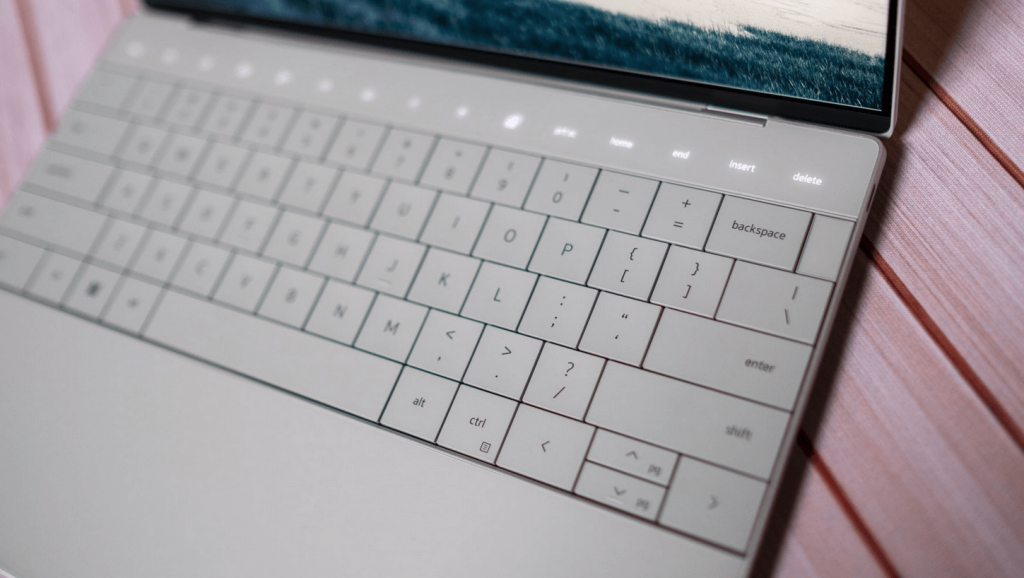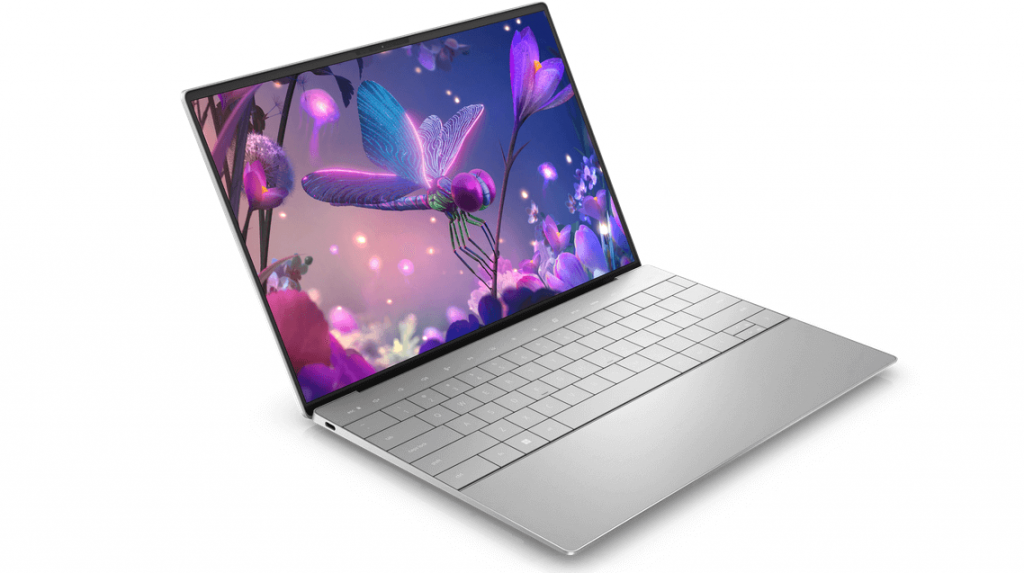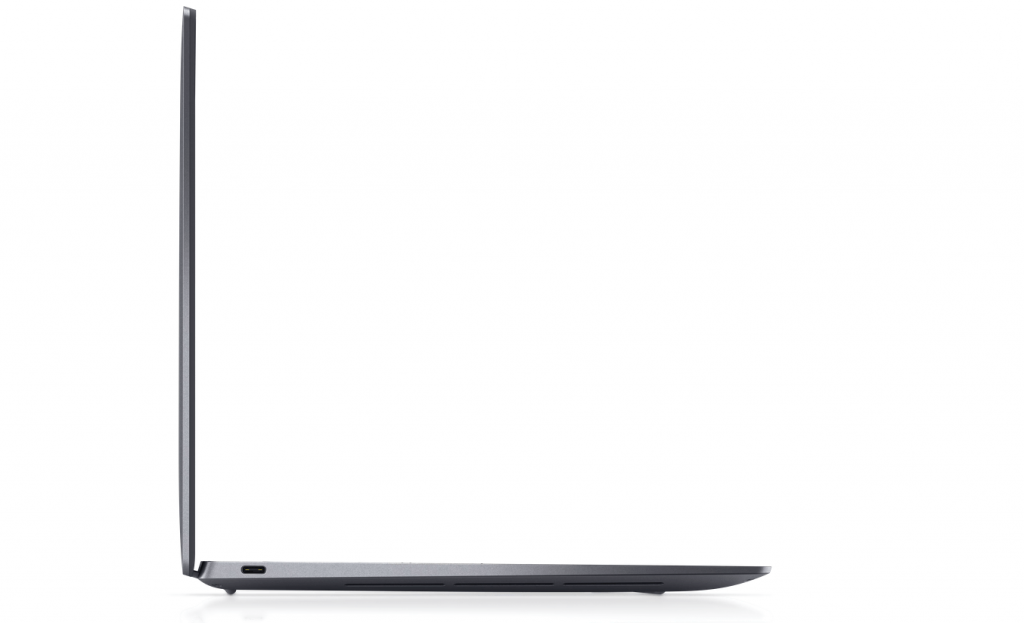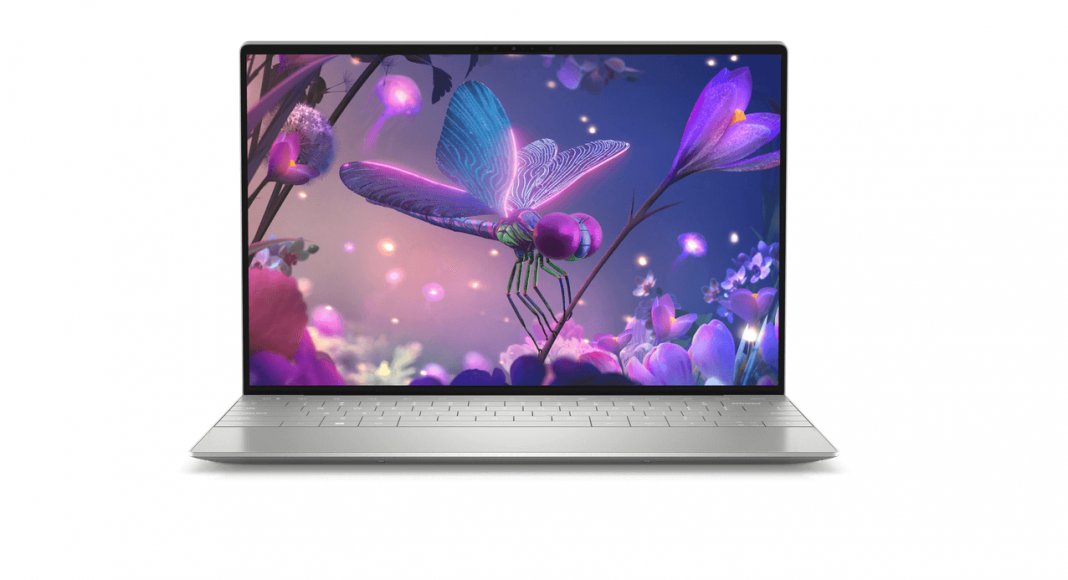Like fashion and cars, laptop designers tend to copy each other’s looks and attributes. For instance, huge bezels were all the rage until Dell’s original XPS 13 split from the club and presented InfinityEdge bezels. Within a year, any laptop with big bezels looked years, if not a decade, outdated. The new Dell XPS 13 features much of the identical design cues but with some, shall we say, thrilling transformations.
The XPS 13 Plus delivers blazing-fast processing performance, a lovely OLED screen, and above-average audio. It ticks off many boxes regarding what most users desire in an ultraportable system. It’s light, elegant, and powerful. However, it’s skipping a headset jack, and there are just two USB-C ports. The lack of a headset jack is definitely a strange omission. However, we still feel this is an excellent choice for business professionals or graphic designers.
SPECIFICATIONS AND FEATURES
Let’s find out what’s powering this XPS 13 Plus. Our review model has an Intel Core i7-1280P chip. The Alder Lake CPU features an impressive-sounding 14 cores, out of which 6 are performance cores, and 8 are efficiency cores. Here are the rest of the specifications for you to eyeball, but the fundamental features include a standard M.2 Gen 4 SSD storage and the choice for a pleasing 3.5K OLED display.
| Display | 13.4 3.5K 3456×2160 OLED touch, 400-nit rated, anti-reflective coating |
| Processor | Intel 14-core Core i7-1280P |
| Graphics | Iris Xe Graphics |
| Memory | 8GB-32GB LPDDR5/5200 |
| Storage | 512GB-2TBGB SSD M.2 Gen 4PCIe |
| Ports | 2 Thunderbolt 4 (3.5mm dongle and USB-A to USB-C dongle included) |
| Camera | 720p with Windows Hello support |
| Wireless connectivity | 55Whr |
| Battery | WiFi 6 (802.11ax), Bluetooth 5.1 |
| Operating system | Windows 11 Home |
| Dimensions (inches) | 11.6×7.8×0.6 |
| Weight | 2.71 lbs. for FHD, 2.77 for 4K+ |
| Price | Beginning at $1,249.00, Dell.com |
KEYBOARD AND TRACKPAD
The Dell XPS 13 Plus once again attempts to set the style statement for all laptop manufacturers. The most notable trait is its “trackpad-less” glance that hides the trackpad underneath a contiguous piece of Gorilla Glass. It provides the user the appearance of an ample wrist rest without the usual rectangular cutout for the trackpad area we’re so used to. Instead, the trackpad starts around the space bar’s left side and extends to the right Alt key. There’s also a tiny margin about half an inch from the top and bottom.

In several manners, it’s mainly like the conventional trackpads you’ve already seen on laptops—but invisible. Feedback is via haptic feedback, much like your smartphone’s haptic buzz. The haptic feedback on the XPS 13 Plus functions surprisingly well versus conventional trackpads that physically move and click. With a traditional trackpad, it gets basically unattainable to click as you approach the spacebar where the hinge pivots. With the XPS 13 Plus, the click function utilizes a tiny mechanism and operates equally well anywhere on the trackpad.
Although it’s fantastic to look at, one issue with the invisible trackpad is not knowing where the boundaries are. In our experience, however, this trackpad felt as natural as any other. It’s probably years of activity from the trackpad always being in the central part between your palms. Others may have trouble locating it and want to see the lines around the perimeter, but the experience was seamless for us.
What’s perhaps scary-clever regarding the trackpad is that it’s so attention-grabbing you may miss the other things worth discussing. For instance, the other less-noticed design change with the XPS 13 Plus is the capacitive touch function keys (these substitute mechanical keys). They default to media operations and display brightness. With the function key press, it converts to F1 to F12.

We certainly don’t mind the media and screen brightness being capacitive touch, but having the escape, delete, end, and home keys as capacitive touch is exceptionally harsh. For example, pressing Ctrl-Alt using physical buttons and then having your finger crunch into the capacitive Delete key just feels absurd. Likewise, the all-important Esc key doesn’t feel good without physical feedback.
SOUND AND WEBCAM
Dell has consistently provided better sound on its XPS lineup of laptops, and the XPS 13 Plus isn’t an exception. The speaker units are bottom-firing through slots milled into the aluminum body. As a result, it gets decently loud with relatively rich sound. Honestly, the XPS 13 Plus sounds better than most slim gaming laptops we’ve reviewed.
Other premium laptops offer 1080p resolution and higher, so the XPS 13 Plus’ 720p webcam appears pretty pedestrian. In reality, the picture quality is acceptable. The webcam module also houses an independent IR camera for Windows Hello biometric support.
The XPS 13 Plus also supports presence detection, meaning the screen dims when you look away and illuminates when you walk up. With Windows Hello turned on, you should be able to have it login for you as well. Suppose you’re not into all the facial features. In that case, you can just touch your finger to the power switch, which has an integrated fingerprint scanner.
CONNECTIVITY OPTIONS
Regarding connectivity ports on the XPS 13 Plus, it’s about as minimalistic as the trackpad. Yes, it has two USB-C ports, but if one of those fails, the XPS 13 Plus goes from “ports” to port. On the left side, it has a single USB-C port available. The other side is virtually a mirror image of the left side.

The 3.5mm combo jack for your headset is missing, nor is there a USB-A port. However, the good news is that Dell does at least provide you a USB-C to 3.5mm and a USB-A to USB-C adapter in the box. This isn’t the first XPS to ditch a headset jack or USB-A port, but it still makes us mad. Yes, eliminating ports saves on internal space—but that’s beginning to sound like an excuse for just about everything.
At least both the type-C ports offer Thunderbolt 4 support, so you can charge and run an external display off a single port with the help of a dock or hub. However, when you plug in the 60-watt charger, you have only one port usable.
PERFORMANCE
Suppose you’re a laptop shopper more interested in the powerhouse. In that case, we’ll kick off our look at the performance of the XPS 13 Plus in Maxon’s Cinebench R20 benchmark. For CPU and graphics testing, all tests were executed in Windows 11, and the laptops were set to their performance mode.
Cinebench is a test based on a similar engine utilized in its professional 3D-modeling product. We conduct the test using all cores and then employing a single core. Under a multi-core load, the XPS 13 Plus with Core i7-1280P comfortably outpaces machines based on Intel’s older 11th-gen CPUs and all generations of AMD’s Ryzen U-class processors. So if you’re thinking of an ultra-portable laptop that can actually bring out respectable performance for 3D modeling, Dell’s XPS 13 Plus is a candidate. That also likely implies it should do quite well with compiling code as well as other jobs that utilize all of the cores.

The XPS 13 Plus also leads the group in single-threaded or single-core performance. This indicates it should do well in lightly threaded jobs such as most things individuals do in Office, photo editing, and Internet browsing. Although Cinebench R20 is a good measurement for an all-core load that may take a minute or two, some things take far longer. More extended workloads produce heat. Laptops deal with this by raising fan speed or simply hindering the processor.
For this trial, we use the popular and freely available Handbrake encoder to convert a 4K 6 Gigabytes video encoded in H.264 to the more efficient H.265 CODEC utilizing the CPU. The job inclines more toward CPU cores and takes quite some time to execute. For instance, on the quad-core 11th-gen MSI Prestige 14 Evo, it takes about 1 hour and 40 minutes to complete. Nevertheless, the XPS 13 Plus outpaced the Asus Zenbook 13 with its 8-core Ryzen 7 5800U. It also outpaced the recently launched Zenbook 13S OLED with its 8-core Ryzen 6800U by a fragile margin.

You can also see the natural effect of the laptop company’s decisions with the aging Lenovo IdeaPad, which slides in front of the XPS 13 Plus. Performance on remarkably long-running and CPU-intensive tasks places the XPS 13 Plus in good company, but it doesn’t quite end up in the first position. Realistically, it’s okay.
Following is UL’s PCMark 10, a standard that estimates usage tasks in document editing, videoconferencing, and digital content creation, such as 3-Dimensional modeling and rendering. The all-around winner in this round is the Zenbook 13 S OLED with its Ryzen 7 6800U, but we’re basically looking at a stretch of about 4 percent. Overall, we’d call it not a significant deal, and most users will be satisfied with either.

Actually, for what most individuals do on very thin and lightweight laptops, any of the machines will do pretty well. On the flip side, the Intel-based laptops perform better in the Essentials category, which counts app startup using Firefox, Chromium, LibreOffice Writer, and GIMP image editor. Both Intel laptops also perform better in videoconferencing. Finally, the XPS 13 Plus and the newer Asus Zenbook 13 S OLED effortlessly beat their opponents in digital content creation.
Although gaming isn’t typically what users do on premium ultraportable notebooks, we quickly checked the graphics performance using 3DMark Time Spy. It’s a famous synthetic and trustworthy benchmark. The benchmark is leaned toward graphics performance. The latest Asus Zenbook 13 S OLED with its Ryzen 7 6800U chip and RDNA2 graphics has a decent advantage over Intel’s most promising Iris Xe graphics. The XPS 13 Plus outperforms CPU tests, but gaming is still primarily about graphics performance, and it shows.

BATTERY LIFE
We certainly didn’t predict the stellar run time we witnessed in the Asus Zenbook 13 S OLED with its Ryzen 7 6800U, specifically since it has a 22 percent bigger battery. Still, we expected similar battery life to the MSI Prestige 14 Evo with the same size battery. As you might noted earlier, the display resolution of the XPS 13 Plus is much higher than the Prestige 14 Evo’s. But, at the same time—XPS is an OLED, which should perform better during video playbacks.

The upshot is that battery life won’t be terrible on the XPS 13 Plus, but it won’t impress. It survived a little over 8 hours on a single full charge.
VERDICT
There’s a ton to unpack with the XPS 13 Plus. Dell’s decision to relinquish the headset jack and cut down to only two ports, as well as going for the capacitive touch buttons, aren’t welcome transformations. But is it enough to strike out the other layout cues? The invisible haptic trackpad, for example, makes the XPS 13 Plus downright elegant and modern looking. But, of course, many will also claim to not care about style.
Although the new unique style of XP 13 Plus isn’t guaranteed to set the norm for other laptops to follow, plenty of history says it will. Beyond the futuristic style, you’re still getting the leading-edge performance and a gorgeous OLED display, all wrapped in a stunningly attractive laptop. So it’s still a solid choice for business professionals and graphic architects.




